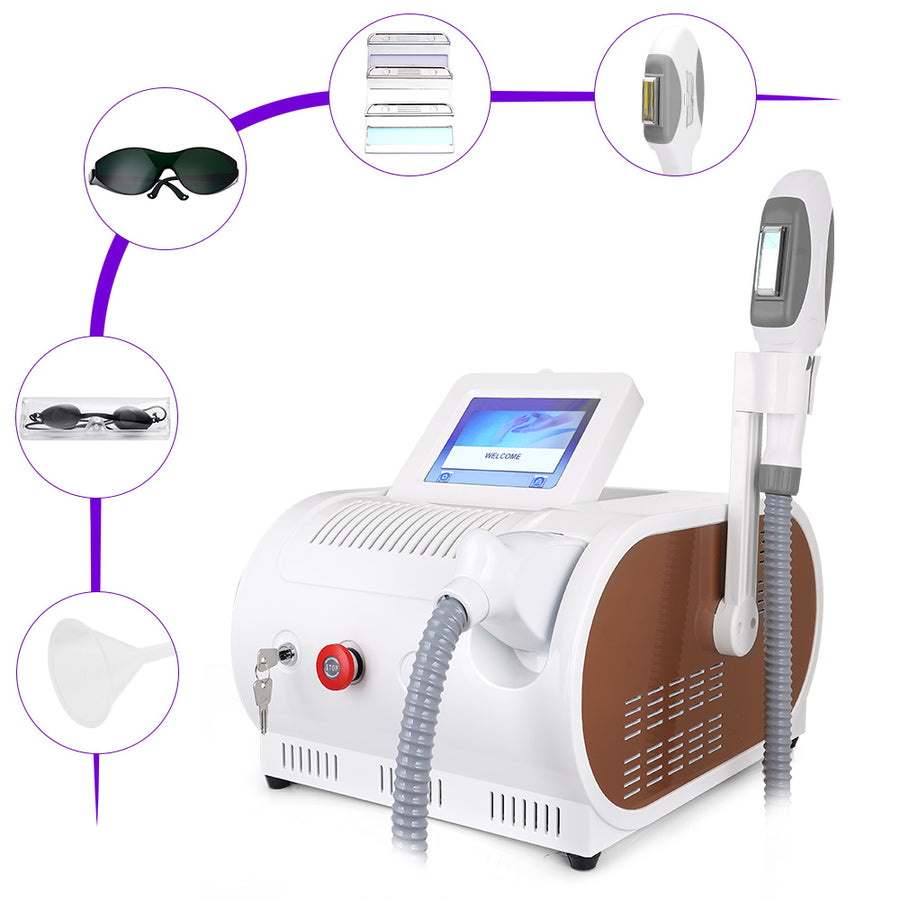In the quest for smooth, hair-free skin, people have explored various methods of hair removal throughout history. Traditional techniques like waxing, shaving, and threading have long been used, but in recent years, technological advancements have introduced a new player to the game – hair removal machines. These hair removal machines, ranging from laser to IPL (Intense Pulsed Light) machines, promise efficient and long-lasting results. However, an important consideration in the effectiveness of these devices is the color of the hair being targeted.
In this article, we will delve into the science behind hair removal machines and explore how effectively they work on different hair colors.
Understanding the Basics
Before delving into the intricacies of how hair removal machines interact with different hair colors, it’s essential to understand the fundamental mechanisms of these devices. Laser and IPL devices operate on the principle of selective photothermolysis, a process that involves the absorption of light energy by the melanin pigment in hair follicles. Melanin, the pigment responsible for hair and skin color, absorbs the light emitted by the devices, converting it into heat. This heat damages the hair follicle, inhibiting future hair growth.
Hair Colors and Their Influence
Dark Hair:
Dark hair, particularly black and brown, contains higher concentrations of melanin, making it an ideal target for hair removal machines. The melanin absorbs more light energy, resulting in effective heat generation and damage to the hair follicle.
Laser hair removal is particularly successful on dark hair due to its focused and concentrated beam, providing precise targeting.
Blonde and Red Hair:
Blonde and red hair, on the other hand, have lower melanin concentrations, posing a challenge for traditional hair removal machines. The limited melanin makes it harder for the light energy to be absorbed efficiently.
Advanced technologies, such as Alexandrite and Nd:YAG lasers, have shown some success in treating lighter hair colors by adjusting wavelength settings to better target the reduced melanin.
Grey and White Hair:
Grey and white hair present a significant challenge for hair removal machines as they lack melanin altogether. Since these hairs do not absorb light effectively, the traditional principles of laser and IPL hair removal may not yield satisfactory results.
Alternative methods, such as electrolysis, which target the hair follicle with electrical currents, may be more suitable for individuals with grey or white hair.
Factors Affecting Effectiveness
Skin Tone
The effectiveness of hair removal machines is also influenced by the individual’s skin tone. Darker skin contains more melanin, which can absorb the light meant for the hair follicle, potentially leading to skin damage.
Modern machines often come equipped with adjustable settings to cater to different skin tones, minimizing the risk of adverse reactions.
Advanced Technologies:
Ongoing advancements in technology have led to the development of more versatile hair removal machines. For instance, diode lasers and IPL devices with broader wavelength ranges are designed to target a variety of hair colors and skin tones.
Research and development in this field are continually pushing the boundaries, striving to make hair removal accessible and effective for a wider range of individuals.
Professional vs. At-Home Devices:
Professional hair removal clinics often use high-powered devices with precise settings to accommodate different hair colors and skin tones. At-home devices, while convenient, may have limitations in terms of power and adaptability.
It’s crucial for users to follow safety guidelines and choose devices that are suitable for their specific hair and skin characteristics.
Conclusion:
In the ever-evolving landscape of hair removal, the effectiveness of machines across different hair colors is a complex interplay of science, technology, and individual variations. While individuals with dark hair often experience optimal results, those with lighter or non-pigmented hair may face challenges. Advancements in technology are progressively addressing these challenges, offering more inclusive solutions.
FAQs
-
Can hair removal machines effectively treat all hair colors?
While hair removal machines are generally more effective on dark hair due to higher melanin concentrations, technological advancements have made it possible to target lighter hair colors as well.
-
Do hair removal machines work on grey or white hair?
Grey and white hair, which lack melanin, present a challenge for traditional laser and IPL devices. These hairs may not absorb light efficiently, affecting the effectiveness of the treatment.
-
Is it safe to use hair removal machines on different skin tones?
The safety of using hair removal machines on various skin tones depends on the technology and settings of the device. Darker skin tones contain more melanin, making them more susceptible to heat absorption.
-
Can at-home hair removal devices be as effective as professional treatments?
Professional hair removal clinics typically use high-powered devices with precise settings to cater to different hair colors and skin tones.
-
Are there any side effects associated with using hair removal machines on different hair colors?
Side effects may occur, particularly if the device is not used correctly or if the individual has certain skin conditions.

